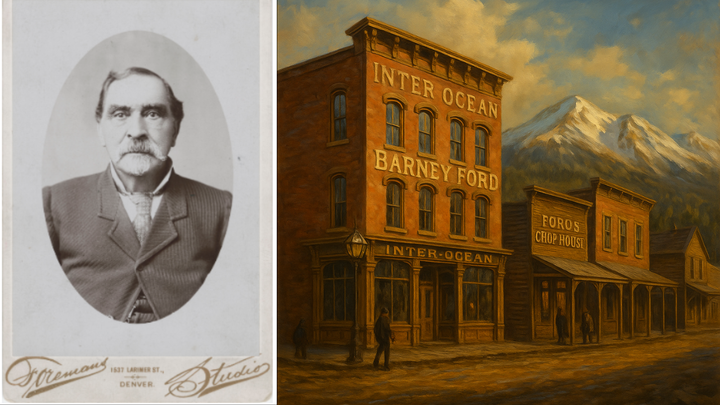Overtown: The Black Wall Street of Florida
What if I told you Miami had a Black Wallstreet of its own!

Overtown, historically known as "Colored Town" during the Jim Crow era, was once a flourishing community for Black residents in Miami. Comparable to Tulsa's Greenwood District or Durham's Hayti, Overtown became a beacon of Black entrepreneurship, culture, and community resilience. During its peak in the 1930s through the 1950s, it was a self-sustained economic and cultural hub that played a pivotal role in Black Miami’s history.
Origins and Development
The foundation of Overtown was laid at the turn of the 20th century when Miami was incorporated in 1896. The construction of Henry Flagler’s railroad brought many Black laborers to Miami, primarily from the Southern states and the Bahamas. These workers were segregated into specific areas under the strict racial policies of the era, giving rise to a segregated neighborhood designated for Black residents, which eventually became Overtown.
Despite the racial segregation, Overtown quickly grew into a thriving community. Black laborers, who were fundamental in the building of Miami’s railways and infrastructure, began to settle there with their families. By the 1920s, Overtown was booming as Black professionals and entrepreneurs established businesses that catered to the growing population. The district became known for its vibrant business district along Northwest Second Avenue, often referred to as "Little Broadway," which served as the epicenter of Black commerce.
🔥 Unlock the Untold History: 500 Amazing Facts About the Negro Vol. I 📚
Dive into the rich, hidden history of Black excellence across North America, Mexico, and Canada! Our official ebook, "500 Amazing Facts About the Negro Volume I, 1-100" uncovers groundbreaking achievements and contributions that have been left out of mainstream history.
Right now, it's available for only $7.97 (regularly $29.99)! When you buy from the link below, you'll get instant access to this treasure trove of knowledge. Don't miss this chance to reclaim these incredible stories of Black brilliance!

Don’t miss out on uncovering the truth behind suppressed stories of Black excellence and resilience. Click the link below and start your journey now! 👇🏾
Economic and Cultural Prosperity
At its height, Overtown was home to hundreds of Black-owned businesses, ranging from general stores and pharmacies to theaters and hotels. The Lyric Theater, built in 1913, became the cultural heart of the community, hosting vaudeville acts, movies, and later jazz performances. The Lyric Theater still stands today as a historical landmark, symbolizing Overtown's rich cultural legacy.
The community was also home to Dana A. Dorsey, Florida’s first Black millionaire, who built his fortune through real estate development. Dorsey’s contributions were monumental in shaping Overtown's economic landscape. He not only invested in local properties but also founded Miami’s first Black-owned bank, allowing Black residents to access financial services during a time when white-owned banks discriminated against them.
Overtown was a safe haven for Black entertainers who were not allowed to stay in the hotels in white areas, like Miami Beach, where they performed. Prominent figures such as Count Basie, Ella Fitzgerald, and Nat King Cole would perform in Miami’s white venues but return to Overtown for rest and refuge. The Mary Elizabeth Hotel, one of the many Black-owned hotels in the area, was renowned for hosting these artists, creating a dynamic nightlife scene that attracted both Black and white audiences.
The Fall of Overtown
The decline of Overtown began in the late 1950s, as urban renewal projects and the construction of highways such as I-95 and the Dolphin Expressway began to fragment the neighborhood. These projects, under the guise of modernizing the city, decimated much of Overtown’s commercial district and displaced thousands of residents. The community lost nearly 80 percent of its population as homes were demolished and businesses were forced to close.
This infrastructural development led to economic depression and reduced the once-thriving Black Wall Street of Miami into a dilapidated urban area. Additionally, the passage of civil rights legislation in the 1960s, while a landmark for ending segregation, had the unintended consequence of enabling Black residents to move into previously restricted neighborhoods, further depleting Overtown’s population.
Revitalization and Legacy
Efforts to revitalize Overtown have been ongoing since the 1980s. The restoration of historic sites such as the Lyric Theater and community initiatives to preserve the area’s cultural heritage have brought renewed attention to Overtown’s legacy as a center of Black business and culture. In recent decades, organizations have worked to rebuild the community by creating community gardens and addressing food insecurity, housing, and jobs training.
Today, Overtown is a symbol of Black resilience and serves as a reminder of the vibrant Black business districts that once thrived throughout the United States. Its history as Florida’s Black Wall Street is a testament to the entrepreneurial spirit and cultural contributions of its residents, even in the face of systemic racial discrimination. The ongoing efforts to preserve its legacy reflect the importance of remembering and honoring this significant chapter in Miami’s Black history.
Text within this block will maintain its original spacing when published 500 Amazing Facts about the Negro Volume I Reviews




Text within this block will maintain its original spacing when published Get your ebook NOW and see what all the Hype is about ! ✊🏿🙌🏿




Comments ()